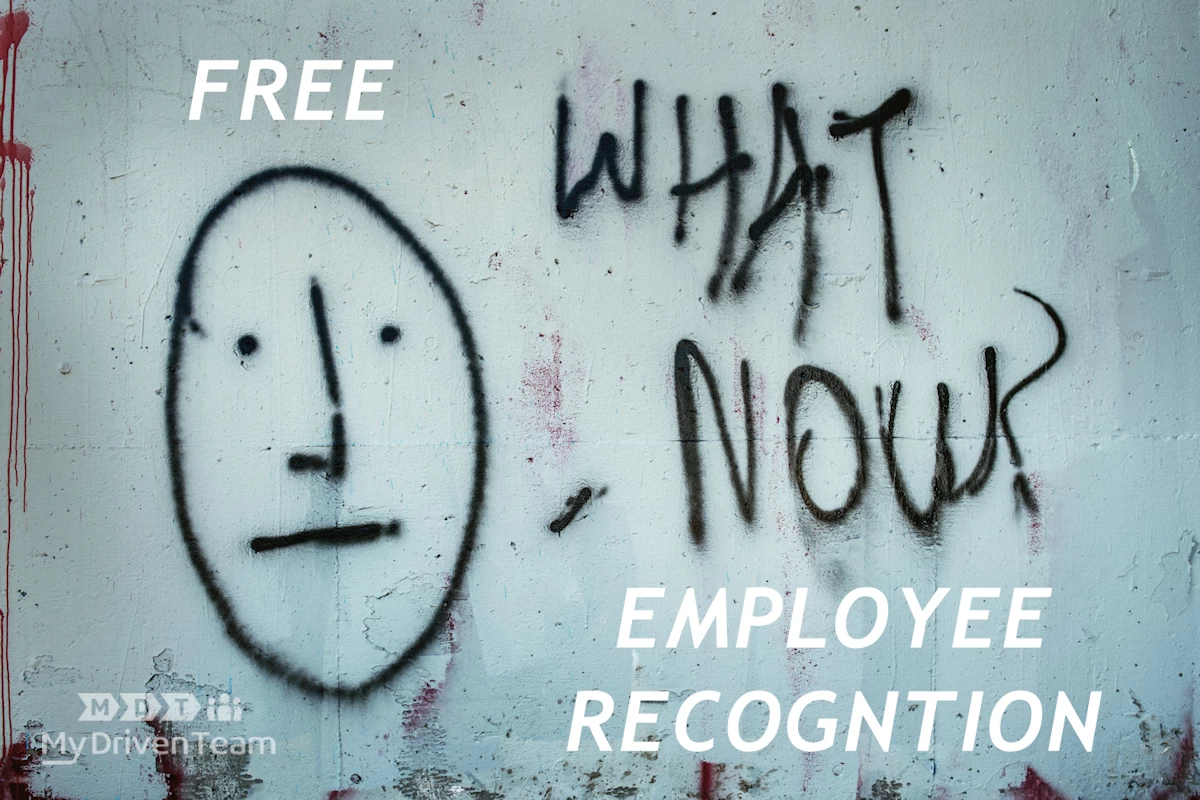
Most workplaces rely on good employee attendance to function. After all, when employee attendance drops, so does production (and, potentially, the company’s bottom line). There are several reasons for poor employee attendance; luckily, there are steps that you as an employer or manager can take to improve attendance.
Here’s how to improve employee attendance problems in just one week:
- Understand the reasons for poor attendance
- Set systems
- Offer incentives
- Allow flexibility
- Enforce disciplinary actions
- Know the laws
- Keep employees informed
- Improve the work atmosphere
This article outlines tips and strategies to help you improve employee attendance in one week, as well as over the long term.
1. Understand the Reasons for Poor Attendance
Some of the most common causes of employee non-attendance include disengagement, family responsibilities, and illness. As a manager, you need to understand which of these causes is the most prevalent in your company and how you can address them.
Here’s a more detailed look at some of the causes of poor attendance in the workplace according to Investopedia:
- Disengagement. One main reason employees skip work is disengagement with the company or its values. If an employee doesn’t feel connected to the company’s vision or mission, they will be less motivated to go to work.
- Stress and burnout. If an employee feels overworked or under a lot of pressure, they may choose not to do the work altogether. Burnout can be caused by excessive pressure and if an employee feels the need to take work home.
- Caring for family. Some employees may need to take time off to care for children or elderly family members. They may also need to care for a sick spouse or household member.
- Poor mental health. A study by Lamichhane, Heo, and Kim (2017) found that depression is one of the leading causes of workplace absenteeism. Employees may not come to work because of clinical depression, anxiety, or other mental health issues.
- Illness. Employees may also call in sick to work if they have physical health problems, such as mild illnesses like colds.
- Bullying. Many workplaces have high incidences of bullying among employees. If the employee doesn’t feel supported when reporting these incidents to their managers or the HR Department, they may choose not to come to work.
- Partial shifts. Partial shifts are when an employee comes in late, takes long breaks, and leaves early. Partial shifts often cut down on focus and productivity.
How To Understand the Causes of Employee Absenteeism
To understand the specific causes of absenteeism in your company, there are several approaches you can take, such as monitoring data, conducting surveys, and talking to employees.
Monitor Data
Many companies use software systems to record and monitor employee attendance. These systems can perform a wide range of tasks, from recording the time in and out to collecting data about why an employee is absent. You can set up your data system to ask employees why they’re clocking in late or absent. Then, run data reports to understand the main reasons behind poor attendance patterns.
Conduct Surveys
Make it part of your monthly task list to conduct employee surveys. These should gather information not just on employee attendance but also on workplace engagement, connections to colleagues, and attitudes towards work. If you see a decrease in employee attendance, check the surveys to see whether anything in employee engagement has changed.
You should also keep the surveys anonymous, so you know employees are being completely honest with their answers.
Finally, design the surveys to ensure you’re getting the most accurate data and reports.
Talk to Employees
It would help if you made it part of your routine to talk to employees and understand their attitudes towards the workplace. This will help you get a general overview of the atmosphere in the company.
There are several ways you can gather pertinent information on absenteeism from employees:
- Appraisals and performance reviews. Most companies have annual appraisals and performance reviews. Use these as opportunities to gather insights into each employee’s circumstances and the reasons they have or may not show up to work.
- Informal conversations. If your employees see you as approachable, they’re more likely to give you insights into personal circumstances during breaks or day-to-day conversations.
- Team meetings. Team meetings and team-building sessions help you get to know your team better and facilitate open conversations. Some employees may be more likely to open up in team-building than in one-on-one conversation.
Understanding the reasons behind poor attendance in your company is the first step to addressing the problem of employee absenteeism.
2. Set Systems
One of the best ways to fix attendance problems is to set up systems that show employees what they’re entitled to. The right systems also help track attendance and keep information transparent for employers and employees.
Here are some systems you should put into place in your company:
Clear Expectations
Each company will have its policies on attendance. While some companies don’t mind employees being late as long as they meet deliverables, others may offer carers or carer’s leave. In any case, you should clearly outline policies and processes on attendance.
These attendance expectations and policies should be conveyed consistently and at stages of an employee’s career. Here are some instances where you can reiterate attendance expectations:
- In an offer letter. It’s essential to let employees know about attendance expectations before they sign their offer letter and contract. This helps them understand what they’re signing on for and improves accountability and compliance.
- In an onboarding checklist. Each employee should be walked through attendance policies during their onboarding. An onboarding checklist will help you keep track of all the policies and processes employees should know.
- In a workshop manual. Employees should have a physical or online copy of policies to improve their understanding of their obligations.
Aside from leave expectations, it would be best if you also informed employees about policies on shifts, punctuality, and leave notifications.
Train Employees on How To Register Attendance
Other than outlining attendance expectations, you should also train your employees on how to apply for leave, register an absence, and any other attendance-related processes. Walking employees through the system ensures that you capture accurate attendance data.
Also, training them on the attendance system will empower them to understand how their attendance is tracked and how it’ll affect their overall employment.
3. Offer Incentives
Offering small incentives for good attendance can help improve employee attendance in less than a week. For example, you can offer monetary bonuses for continuous good attendance, a team outing, employee recognition, and fuel and travel allowance.
Some organizations may wonder why it’s necessary to offer incentives when attendance is a given in most contracts. The reason is that incentives can help improve punctuality and boost staff morale and productivity.
Incentives are also beneficial when you manage shift and casual workers who have the choice to mark themselves as unavailable. Offering incentives will ensure that workers are less likely to opt out of shifts.
Here are more details about some incentives you can offer.
Monetary Bonus
Giving employees a monetary bonus for sustained positive attendance can help with long-term attendance issues. Hassink and Koning (2009) found that offering a bonus system for employees who had perfect attendance for three months resulted in a net benefit for a company.
Team Outings
If a team has good attendance records over a sustained period, you can offer the team a dinner hosted by the company. This not only helps improve employee morale but also strengthens relationships between colleagues and makes it easier for them to work together.
Employee Recognition
Recognizing employees who have excellent attendance on public platforms can help improve their morale. You can give them this recognition via newsletters, team meetings, and annual staff dinners or celebrations. Make sure it’s clear to the employees what they’re being recognized for, and what criteria merit such recognition.
Fuel and Travel Allowance
Another way you can reward employees for good attendance is to give them an allowance for the fuel they use to commute to work. This can have the bonus of improving their punctuality and attendance. Alternatively, you can offer services like company transportation.
4. Allow Flexibility
A good organization allows transparency and flexibility for employees.
Here are a couple of ways you can offer attendance flexibility to your employees:
- Flexible scheduling. If the nature of the work allows for it, let your employees have flexible shifts. For example, if they want to arrive at 10 am instead of 9 and work an hour later, it may improve their attendance. Indeed, a study conducted by Dalton and Mesch as early as 1990 found that absenteeism decreased when employees enjoy a flexible schedule.
- Varied use of leaves. Some managers may allow employees to use one type of leave for another absence in extenuating circumstances. For instance, if the employee needs to take time off to care for a sick family member, they may be allowed to use their sick leave. If you’re offering employees this option, be sure to get employees to sign a waiver stating that their leave types have been adjusted and used.
5. Enforce Disciplinary Actions
If robust systems and incentives don’t improve employee attendance, you may consider disciplinary actions. Some common disciplinary actions include an attendance warning, pay cuts, and (in extreme cases) termination. However, you must use disciplinary action judiciously and only when necessary (i.e., in the case of troublesome employees).
Here’s a more detailed look at disciplinary actions you may need to take.
Attendance Warnings
An attendance warning is an official letter or memo to an employee about their attendance records. The attendance warning should include the following information:
- The date of the warning.
- The full name and designation of the employee.
- The number of times that the employee had conducted an attendance misdemeanor. This may include tardiness, sanctioned absences, or extended breaks.
- The consequences of continued attendance misdemeanors. Outlined consequences may include a pay cut, bonus withdrawal, or termination.
To let the employee know that their attendance issues are serious, attendance warnings should allow you to provide evidence to organizations like the Fair Labor Association (FLA) that employees have been adequately warned about circumstances that could lead to termination.
You should deliver the attendance warning in a formal meeting with your employee. You should also ask the employee to acknowledge the attendance warning by signing it.
Pay Cuts
If an employee doesn’t respond to or improve after attendance warnings, you may choose to enforce a pay cut. Pay cuts may be justified because an employee didn’t work on a particular day or to cover the cost of extra work that another employee had to pick up.
Termination
If you’ve seen no improvement after attendance warnings and pay cuts, you may eventually need to terminate the employee. To terminate the employee, you need to ensure that:
- The employee has been given a fair warning with enough time to improve performance.
- The employee has been given the right kind of severance pay.
- The company will not be at risk of being sued for wrongful dismissal or termination.
6. Know the Laws
As an HR manager, you must know what the law outlines as far as employee and employer expectations are concerned. By understanding the laws, you can choose what kind of consequences or rewards you can issue employees for attendance.
If you’re issuing consequences for attendances, knowing the law will also prevent you from being sued.
7. Keep Employees Informed
To improve attendance problems within a week, put together a memo or program outlining the incentives, changes, or disciplinary action you have decided on. Then, circulate it to your employees with clear guidelines of what the changes mean to them.
Doing this will encourage employees to make changes to their attendance patterns immediately.
8. Improve the Work Atmosphere
Employees that enjoy coming to work are less likely to miss a day or take longer breaks. As an employer, you should create a great company culture and an appealing physical environment. You should also ensure that employees’ mental health and work-life balance are supported.
Here’s a look at a few ways to improve the work atmosphere.
Improve Culture
A workplace with a good culture is where employees and the company’s mission and values align.
Here are some ways to build a thriving company culture according to Forbes:
- Allow ‘fun’ break times. Giving your employees the time and space to engage in fun activities will improve both their attendance and efficiency. If fun activities like games are available during breaks, the risk of burnout and disengagement will likely go down.
- Foster flexibility. Aside from flexibility towards attendance, it would be best if you also allowed flexibility towards working styles and patterns. This will improve motivation and work engagement and encourage better attendance as a result.
- Promote a team atmosphere. Ensure that your team members are supporting each other. This may include making the team accountable to each other or creating collaborative projects to work on. In a positive team culture, the success of each individual adds up to the success of the team.
Physical Environment
Creating an inviting space ensures employees look forward to coming to work every day. Here are simple ways to improve the physical work environment in your company:
- Include nature. Many companies and architects use the principles of biophilic design to improve environments. Biophilia refers to the innate connection humans have to nature. By including elements of nature in the workspace environment, you can reduce stress and anxiety.
- Have good facilities. Ensure you have provided employees with a staff room and appliances like microwaves, kettles, toasters, and others that’ll make their lives more comfortable.
Build on Mental Health
As an employer, you should make it a point to include mental health initiatives within the workplace. Promoting better mental health and addressing the issues with the same ensure that employees stay engaged with work and reduce the risk of burnout and poor attendance.
Aside from nurturing a positive work culture and physical environment, here are other ways to boost your employees’ overall mental health:
- Give access to therapy. As part of your employees’ medical plan, offer sessions with a therapist or counselor. It would be best to allow employees access to mental health days and regular sick days.
- Encourage workplace meditation. Offering time during the day to do a group meditation can alleviate anxiety and also build on workplace camaraderie and relationships.
- Provide reasonable adjustments. To support your employee’s engagement, look for ways you can make adjustments to their work-life that will help them feel more comfortable. For instance, an employee with social anxiety can network with clients online or through other mediums instead of face-to-face. These adjustments can help reduce anxiety, depression, and other mental health conditions.
Final Thoughts
There are several ways you can reduce employee attendance problems. Start by understanding the reasons your employees are showing poor attendance patterns. Then, devise incentives, consequences, and systems to fix the problem. Ensure that you continue to track the attendance data to see which approach works best.
By focusing on attendance, you can significantly improve your company’s output and overall performance.
Sources
- JSTOR: The Impact of Flexible Scheduling on Employee Attendance and Turnover
- Ascentis: How to Track Employee Attendance
- Fair Work AU: Managing performance & warnings
- Face to Face HR: Seven ideas to improve your workplace environment
- Forbes: Six Tips To Improve Your Corporate Culture
- National Library Medicine: Depressive symptoms and risk of absence among workers in a manufacturing company: a 12-month follow-up study
- JSTOR: Do Financial Bonuses Reduce Employee Absenteeism? Evidence from a Lottery
- Investopedia: The Causes and Costs of Absenteeism
- Living Future: Biophilic Design
- Mental Health UK: How to support mental health at work
- Resourcing Edge: Tips to Improve Employee Attendance
- SHRM: Attendance Incentives Are Critical for Some Organizations
- Tanda: Warning Letter for late coming



